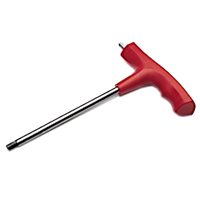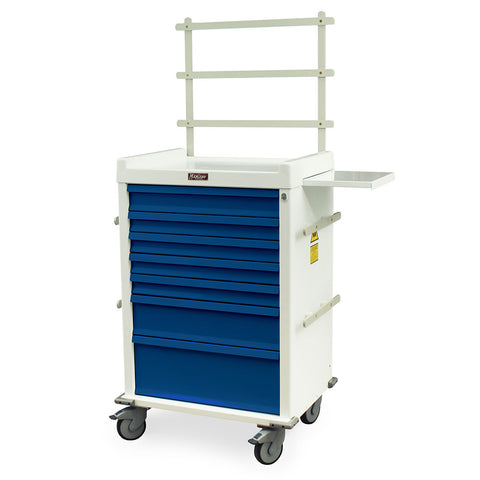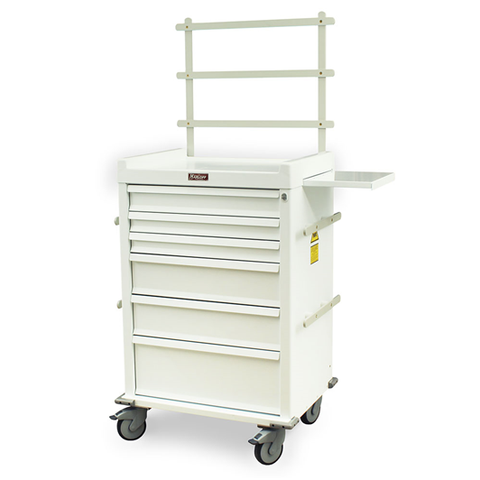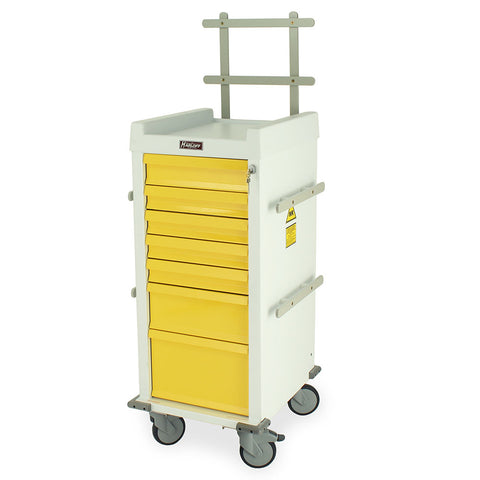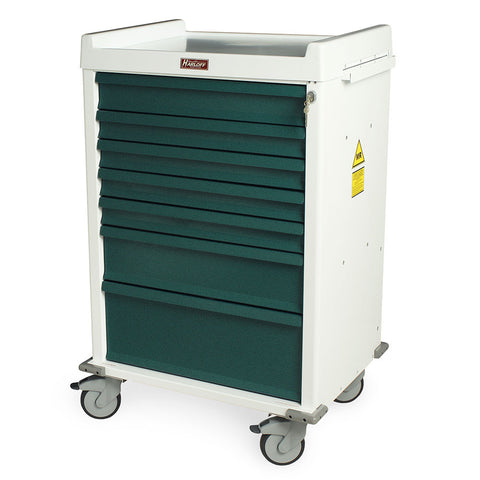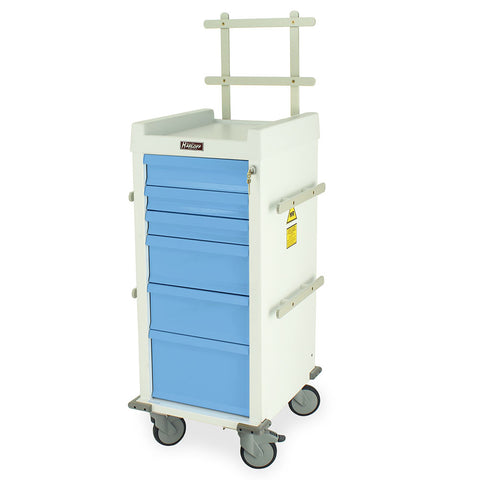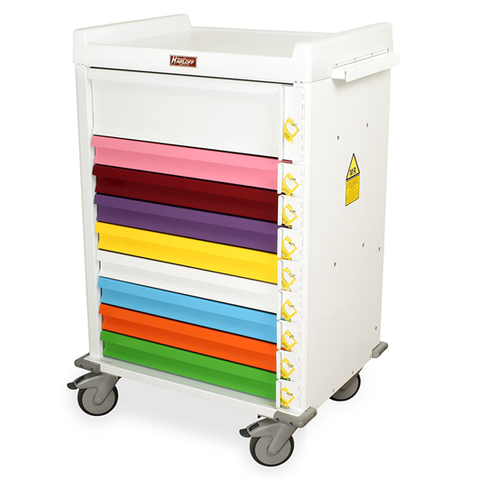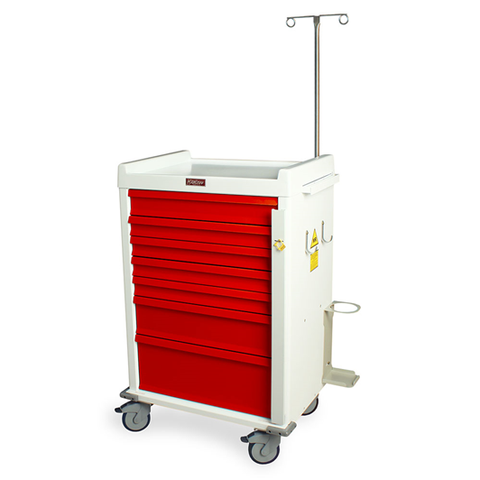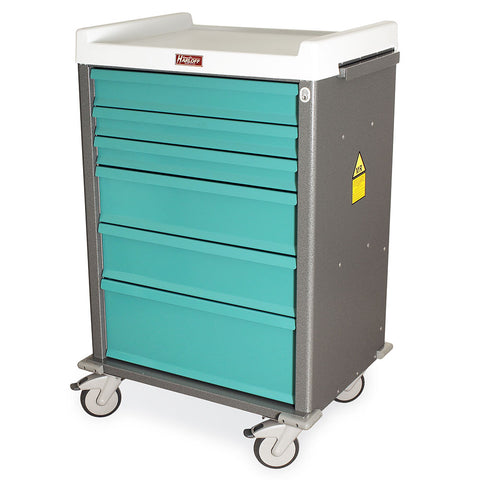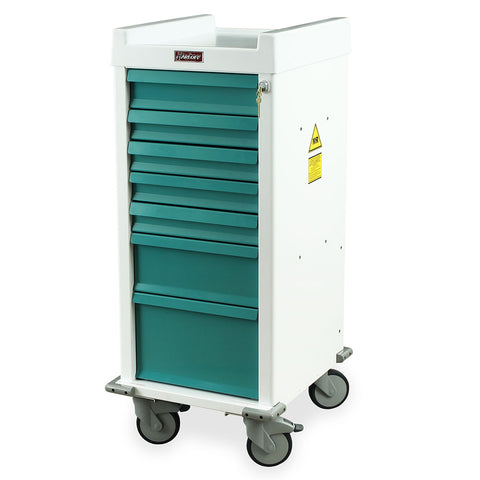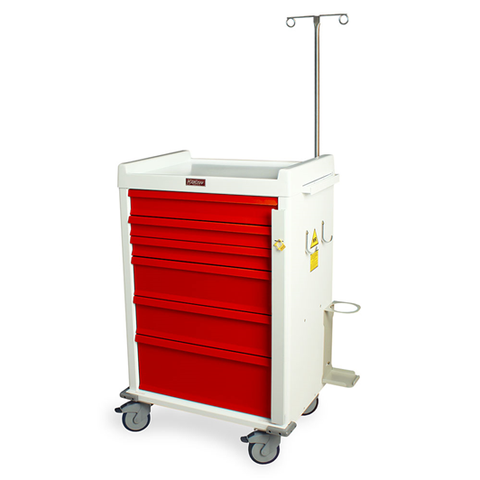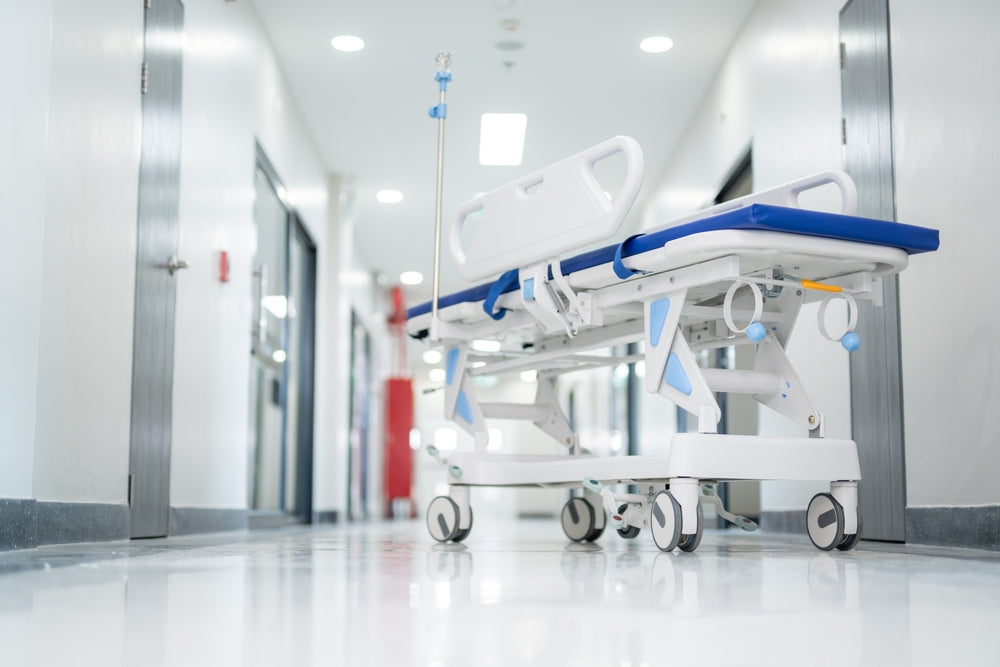
Efficient MRI patient transport is critical for patient safety, scanner throughput, and overall workflow. Mid-size hospitals face unique challenges, balancing limited staff, varied patient populations, and tight MRI suite layouts. This case study explores how MRIMed MR Conditional wheelchairs, stretchers, and MR Safe accessories transformed patient transport efficiency while maintaining the highest safety standards.
Introduction to MRI Transport Challenges
Common Bottlenecks in Mid-Size Hospitals
Mid-size hospitals often struggle with patient flow due to limited MRI suite space, single-staff transport teams, and multiple patient types requiring different transport devices. Common bottlenecks include:
-
Narrow corridors and tight doorways that restrict device maneuverability.
-
Simultaneous scheduling of sedated, pediatric, or bariatric patients.
-
Equipment availability issues, particularly when only standard hospital stretchers are used, which are MR Unsafe.
Using MR Conditional devices like MRIMed’s Non-Ferrous Height Adjustable Stretcher and MR Conditional 24-inch Wheelchair can reduce delays and ensure safe patient movement.
Importance of MR Conditional Devices for Patient Safety
The use of MR Conditional devices is vital to avoid projectile incidents, RF heating, and device malfunction. MRIMed products meet ASTM F2503 standards for MR Conditional labeling, ensuring that every wheelchair or stretcher can safely be used under specified MRI conditions. Incorporating these devices mitigates risk while maintaining consistent patient care standards.
Overview of the Hospital and MRI Suite
Facility Layout and Patient Volume
The mid-size hospital in this case study serves approximately 40,000 imaging patients per year, with a single MRI suite shared between outpatient and inpatient needs. Corridor widths range from 48 to 60 inches, with multiple 90-degree turns. Managing a mix of ambulatory, sedated, and bariatric patients presented operational challenges before MRIMed solutions were implemented.
MRI Equipment and Suite Specifications
The MRI suite houses a 1.5T scanner with advanced RF shielding and strict SAR limits. Safety protocols required MR Conditional transport devices for all patient movement. MRIMed stretchers and wheelchairs were tested and labeled for these field strengths and conditions, ensuring safe integration into daily workflows.
Existing Transport Procedures Before Implementation
Prior to MRIMed device deployment, hospital staff relied on standard stretchers and wheelchairs, requiring significant manual maneuvering and additional staff support. Workflow inefficiencies included delays for patient positioning, long transfer times, and frequent bottlenecks during peak hours.
Identifying Key Transport Inefficiencies
Delays Due to Equipment Limitations
Standard stretchers were heavy, difficult to move, and MR Unsafe, forcing staff to plan multiple pre-MRI checks and manual interventions. Wheelchairs without MR Conditional labeling could not be brought close to the scanner, increasing patient transfer time.
Risks from MR Unsafe Devices
Using non-magnetic devices created hazards, including the potential for objects to be pulled into the magnetic bore. The risk extended to patient injury, staff safety, and scanner downtime.
Staff Workflow and Training Gaps
Staff had limited training in safe MRI transport procedures. Without standardized workflows, some transfers required extra personnel, creating inefficiencies and increasing the risk of accidents.
Implementing MRIMed Transport Solutions
MR Conditional Stretchers and Wheelchairs
The hospital adopted MRIMed devices, including:
-
Non-Ferrous Height Adjustable Stretcher – Adjustable height for smooth patient positioning.
-
Stainless Steel Non-Magnetic Bariatric Stretcher – Supports heavier patients safely.
-
MR Conditional 24-inch Wheelchair – Flexible for outpatient and ambulatory patients.
MR Safe Accessories: Straps, Backboards, and Transfer Aids
MR Safe devices complemented the main transport devices:
-
MRI Safe Backboard & Stretcher Straps – Secures patients during lateral transfers.
-
Non-magnetic IV poles and oxygen holders ensured continuous patient care during transport.
Staff Training and Standard Operating Procedures
Staff participated in comprehensive MRIMed training covering:
-
Proper use of MR Conditional devices.
-
Emergency procedures and quick removal of patients if needed.
-
Efficient lateral transfer techniques using MR Safe accessories.
Step-by-Step Workflow Optimization
Pre-Transport Preparation and Scheduling
Patients are pre-screened, and MR Conditional devices are pre-positioned to minimize delays. Staff verify device labeling, check casters, and prepare MR Safe straps before patient arrival.
Patient Handoffs and Lateral Transfers
Patients are moved using MRIMed wheelchairs or stretchers, ensuring proper alignment with the scanner bed. Lateral transfers are performed with MR Safe backboards and straps to prevent falls.
Post-Scan Recovery and Return Procedures
After imaging, patients are transferred back to recovery areas using the same MR Conditional devices, maintaining safety and comfort. Workflow is timed to prevent bottlenecks during high-volume periods.
Results and Efficiency Improvements
Reduced Patient Wait Times
By integrating MRIMed devices, average patient transfer times decreased by 35%, allowing more scans per day and improving patient satisfaction.
Increased Staff Productivity and Safety
Fewer personnel were required per transfer, reducing physical strain and minimizing the risk of MR Unsafe incidents.
Enhanced Patient Comfort and Satisfaction
Patients experienced smoother transitions, better support during transport, and reduced anxiety due to the consistent use of MRIMed stretchers and wheelchairs.
Lessons Learned and Best Practices
Device Selection and MR Conditional Compliance
Choosing MRIMed devices for both wheelchairs and stretchers ensures all patient movements are compliant with ASTM F2503 MR Conditional standards, maximizing safety and workflow efficiency.
Staff Training and Workflow Standardization
Regular training and standardized SOPs reduced human error, improved workflow, and ensured proper use of MR Safe accessories.
Continuous Improvement and Monitoring
Ongoing workflow audits and staff feedback allowed further optimization, including better scheduling and pre-positioning of devices.
Implications for Other Mid-Size Hospitals
Adapting Solutions to Different Layouts
Even hospitals with narrower corridors or multiple turns can implement MRIMed stretchers and wheelchairs due to their compact design and maneuverability.
Scalability of MRIMed Devices
MRIMed’s product line offers a range of devices to accommodate outpatient, pediatric, and bariatric patients, making scaling easy as patient volumes grow.
Long-Term Safety and Efficiency Benefits
Long-term adoption ensures continued compliance with MR Conditional safety standards, higher throughput, and improved patient and staff satisfaction.
FAQs
1. What are MR Conditional devices, and why are they important?
MR Conditional devices, like MRIMed stretchers and wheelchairs, are tested to be safe under specified MRI conditions, including field strength, RF exposure, and SAR limits. They prevent injuries and maintain workflow efficiency.
2. Can standard hospital stretchers be used in MRI suites?
No. Standard stretchers are MR Unsafe and pose projectile and RF heating hazards. Only MR Conditional devices, such as MRIMed Non-Ferrous Height Adjustable Stretcher, should be used.
3. How do MR Safe accessories improve patient transport?
Accessories like MRI Safe Backboard & Stretcher Straps secure patients during transfers and prevent falls without introducing MR Unsafe materials.
4. What training do staff need for MRI transport?
Staff must understand MR Conditional labeling, proper lateral transfer techniques, and emergency protocols. MRIMed provides guidance and training materials for all products.
5. Can MRIMed devices support bariatric patients?
Yes. Devices like the Stainless Steel Non-Magnetic Bariatric Stretcher and Bariatric 26-inch Wheelchair support patients up to 700 lbs safely.
